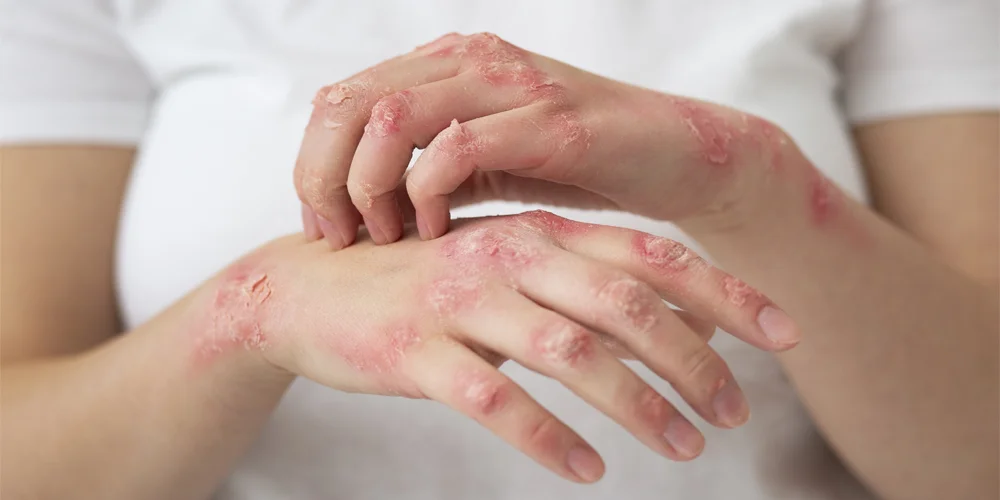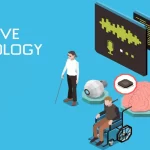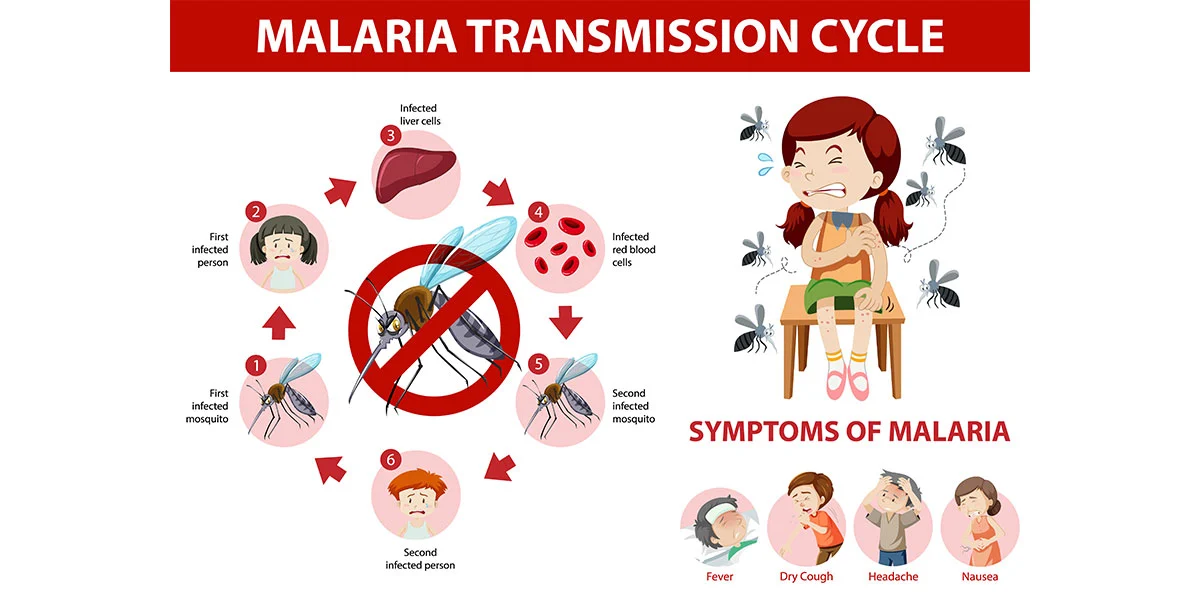Leprosy, also known as Hansen’s disease, is a chronic infectious disease caused by the bacterium Mycobacterium leprae. It primarily affects the skin, nerves, and mucous membranes. Leprosy is characterized by skin lesions, sensory loss, and nerve damage. The disease has a long incubation period, which means that symptoms can take many years to manifest.
Types of Leprosy
Leprosy, also known as Hansen’s disease, has several clinical forms that can be broadly categorized into two primary types: tuberculoid leprosy and lepromatous leprosy. These categories represent the extremes of the leprosy spectrum, and there are intermediate forms as well. The classification is based on the individual’s immune response to the Mycobacterium leprae bacteria.
Here are the main types of leprosy:
- Tuberculoid Leprosy (TT):
– This is the milder and less severe form of leprosy.
– It is characterized by a strong cell-mediated immune response.
– Typically presents with a few, well-defined skin lesions or plaques with clear margins.
– Nerve involvement is limited, and sensory loss may occur in the affected areas.
– Bacterial load is lower.
– There is a higher likelihood of self-healing with treatment. - Borderline Tuberculoid Leprosy (BT):
– This form has characteristics intermediate between tuberculoid and borderline lepromatous leprosy.
– There is a moderate immune response.
– Lesions are more numerous and less well-defined compared to TT.
– Nerve involvement can be more significant, leading to sensory loss and weakness. - Borderline Lepromatous Leprosy (BL):
– This is an intermediate form that displays mixed characteristics of both tuberculoid and lepromatous leprosy.
– The immune response is variable and less effective in controlling the bacteria.
– Skin lesions may be numerous, with less-defined borders.
– Nerve damage can be moderate to severe. - Lepromatous Leprosy (LL):
– This is the more severe and advanced form of leprosy.
– It is characterized by a weak or virtually absent cell-mediated immune response.
– Presents with widespread, poorly defined, and symmetric skin lesions, often covering a large portion of the body.
– Extensive nerve damage and sensory loss occur, leading to deformities and disabilities.
– Bacterial load is high. - Indeterminate Leprosy:
– Some individuals with leprosy may initially present with unclear clinical features.
– Over time, their condition may progress to one of the other recognized forms of leprosy.
– Indeterminate leprosy is a transitional stage, and further observations are needed for a definitive diagnosis.
It’s important to note that the classification of leprosy into these categories is based on clinical, histopathological, and immunological criteria. The progression of the disease can vary from person to person, and individuals may move between these categories during the course of the illness. Treatment for leprosy, typically using multidrug therapy, is tailored to the specific form and stage of the disease. Early diagnosis and appropriate treatment can help prevent complications and deformities associated with leprosy.
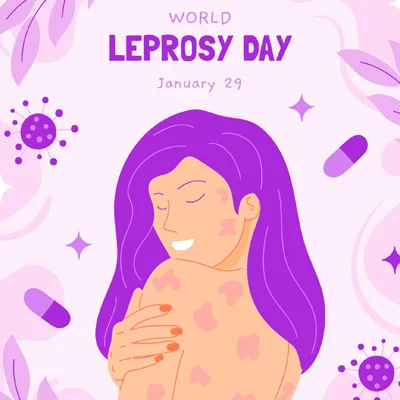
Symptoms of Leprosy
Leprosy, also known as Hansen’s disease, can manifest with a wide range of symptoms, and the specific symptoms may vary depending on the type and stage of the disease.
The primary signs and symptoms of leprosy include:
- Skin Lesions:
– Leprosy often begins with skin abnormalities, such as hypo-pigmented (lighter) or reddish skin patches.
– The skin lesions may be numb or have reduced sensation, making it difficult for affected individuals to feel pain, temperature changes, or touch in those areas. - Nerve Involvement:
– Leprosy primarily affects peripheral nerves, leading to sensory and motor disturbances.
– Nerve damage can result in muscle weakness, muscle atrophy, and the loss of sensation in the limbs and extremities.
– This can lead to injuries or secondary infections in the affected areas, as individuals may not be aware of cuts, burns, or other injuries. - Thickened Nerves:
– Leprosy can cause thickening and enlargement of peripheral nerves, which are often visible and palpable.
– This can lead to the development of nodules or lumps along the affected nerves, such as those in the elbow, wrist, or knee. - Eye Involvement:
– Leprosy can affect the eyes, leading to symptoms such as lagophthalmos (inability to close the eyelids completely), dry eyes, and corneal ulcers.
– These eye complications can result in vision impairment or blindness if left untreated. - Nasal Symptoms:
– In some cases, leprosy can lead to nasal congestion, epistaxis (nosebleeds), and the collapse of the nasal bridge due to cartilage damage. - Ulcers and Skin Nodules:
– Some individuals with lepromatous leprosy may develop multiple skin nodules or lumps that can break down into ulcers.
– These ulcers can be prone to secondary bacterial infections.
It’s important to note that leprosy is a slow-progressing disease, and the symptoms can take months or even years to manifest. Additionally, not everyone infected with the Mycobacterium leprae bacterium will develop full-blown leprosy, and some individuals may have mild or subclinical forms of the disease. Early diagnosis and prompt treatment with multidrug therapy can effectively control and cure leprosy, preventing further progression of the disease and complications such as deformities and disabilities. If you suspect you have leprosy or have been in contact with someone who has leprosy, it’s essential to seek medical evaluation and care.
Causes of Leprosy
Leprosy, also known as Hansen’s disease, is caused by infection with the bacterium Mycobacterium leprae (M. leprae). The exact mode of transmission of M. leprae is not fully understood, but it is believed to involve prolonged and close contact with infected individuals.
The following are some key points related to the causes of leprosy:
- Mycobacterium leprae: Leprosy is caused by the slow-growing bacterium M. leprae. This bacterium primarily infects the skin and peripheral nerves, leading to the characteristic skin lesions and nerve damage associated with the disease.
- Transmission: The exact mode of transmission of M. leprae is not entirely clear, but it is thought to occur through respiratory droplets when an infected person with untreated, active leprosy coughs or sneezes. It is important to note that leprosy is not highly contagious and does not spread easily. Prolonged and close contact with an untreated, infectious individual is generally required for transmission to occur.
- Incubation Period: After exposure to M. leprae, there is a long incubation period that can last several years (typically 2 to 10 years or more) before symptoms of leprosy appear. This prolonged incubation period makes it challenging to pinpoint the exact source of infection.
- Genetic and Environmental Factors: Some people may be more susceptible to leprosy than others due to genetic and environmental factors. It is not fully understood why some individuals exposed to M. leprae develop the disease while others do not.
- Immune Response: The type and strength of an individual’s immune response play a significant role in determining the outcome of M. leprae infection. Those with a strong cell-mediated immune response are more likely to control the infection and develop milder forms of the disease, such as tuberculoid leprosy, while those with weaker immune responses are more likely to develop more severe forms, such as lepromatous leprosy.
It’s essential to note that leprosy is not highly contagious and can be effectively treated with multidrug therapy (MDT) when diagnosed and managed early. Early detection and treatment can prevent the progression of the disease, reduce transmission to others, and minimize complications such as nerve damage and deformities. Public health measures, such as contact tracing and case detection, are also employed to help control the spread of leprosy in affected communities.
Prevention of Leprosy
Preventing leprosy involves a combination of public health measures, early diagnosis, and treatment. While it may not be possible to completely eradicate the disease,
The following steps can help reduce the incidence of leprosy and limit its spread:
- Early Diagnosis and Treatment:
– Early detection of leprosy cases is crucial for preventing the progression of the disease and limiting its transmission to others.
– Leprosy is treatable with multidrug therapy (MDT). Encouraging individuals with symptoms or those in close contact with known cases to seek medical evaluation and treatment is essential. - Contact Tracing:
– Identifying and monitoring individuals who have had close contact with leprosy patients is important to detect new cases early and provide timely treatment if necessary. - Immunization and Prophylaxis:
– Bacillus Calmette-Guérin (BCG) vaccine, which is used to prevent tuberculosis, may provide some protection against leprosy. However, the level of protection varies and is not absolute. BCG vaccination is recommended in areas with a high prevalence of leprosy.
– Post-exposure prophylaxis with a single dose of rifampicin is recommended for people who have close contact with individuals diagnosed with leprosy to reduce the risk of developing the disease. - Public Health Education:
– Raising awareness about leprosy, its symptoms, and the importance of early diagnosis and treatment can help reduce stigma and encourage affected individuals to seek medical care. - Improved Living Conditions:
– Leprosy is more prevalent in areas with poor living conditions, poverty, and limited access to healthcare. Improving living conditions and providing better access to healthcare can reduce the risk of transmission. - Stigma Reduction:
– Reducing the stigma associated with leprosy is essential to encourage affected individuals to seek medical care and integrate into their communities without discrimination. - Research and Surveillance:
– Ongoing research to better understand the disease, transmission dynamics, and genetic factors that influence susceptibility can inform prevention strategies.
– Surveillance systems should be in place to track and monitor the incidence of leprosy and its geographical distribution. - Community Health Workers:
– Training and employing community health workers who are knowledgeable about leprosy can facilitate early case detection and support affected individuals. - Environmental Hygiene:
– Promoting personal hygiene and environmental cleanliness can help reduce the risk of secondary bacterial infections, which can complicate leprosy. - Treatment Completion:
– Ensuring that individuals with leprosy complete their full course of multidrug therapy is crucial to prevent drug resistance and recurrence.
Preventing leprosy requires a multi-faceted approach that combines medical intervention with social and public health measures. Early detection and treatment, along with efforts to reduce stigma and improve living conditions, are key elements in the fight against leprosy.
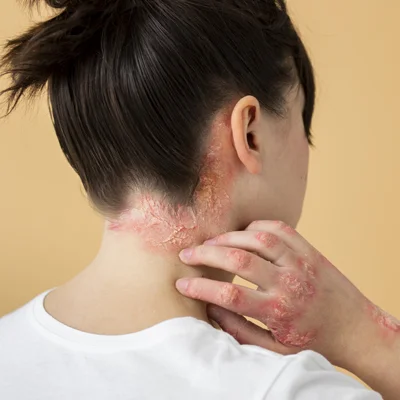
Why is leprosy common in India?
Leprosy has historically been more common in India than in many other countries.
There are several factors that contribute to the relatively higher prevalence of leprosy in India:
- High Population Density: India has one of the world’s largest populations, and many areas in the country have high population densities. In densely populated areas, the transmission of diseases, including leprosy, is more likely due to close human contact.
- Poverty and Poor Living Conditions: Leprosy is more prevalent in impoverished communities with limited access to healthcare, sanitation, and clean water. These conditions can contribute to the persistence and transmission of the disease.
- Stigma and Discrimination: Stigmatization of leprosy and leprosy-affected individuals has been a significant problem in India. Stigma can lead to delays in diagnosis and treatment, as well as social isolation, which can hinder disease control efforts.
- Variability in Healthcare Access: Access to healthcare services can vary widely across India, with disparities between urban and rural areas. In some remote and underserved regions, leprosy cases may go undiagnosed and untreated for extended periods.
- Migration: Internal and international migration can contribute to the spread of leprosy. Movement of people from areas with higher leprosy prevalence to other regions can introduce new cases to those regions.
- Genetic and Environmental Factors: Some genetic factors may influence susceptibility to leprosy. Additionally, environmental factors and local variations in M. leprae strains may play a role in the distribution of the disease.
- Public Health Infrastructure: The effectiveness of leprosy control programs and healthcare infrastructure can vary from one region to another. Strong public health programs are essential for early case detection, treatment, and prevention.
It’s important to note that India has made significant progress in leprosy control efforts over the years. The National Leprosy Eradication Program (NLEP) has been working to reduce the burden of leprosy in the country. The program focuses on early detection, timely treatment, raising awareness, and reducing the stigma associated with the disease.
While the prevalence of leprosy has decreased in India over the years, the persistence of the disease in certain regions and communities underscores the importance of ongoing efforts to improve healthcare access, reduce stigma, and provide comprehensive care to those affected by leprosy.
What is the main problem of leprosy?
The main problem associated with leprosy is the stigma and discrimination faced by individuals affected by the disease. Leprosy has a long history of being misunderstood and wrongly associated with fear, isolation, and social exclusion. This stigma and discrimination can manifest in various ways and can be a significant challenge for those living with leprosy.
Here are some key aspects of the main problem of leprosy:
- Social Stigma: Leprosy has been historically associated with social stigma, fear, and misconceptions. People with leprosy have often been considered outcasts and marginalized from their communities.
- Psychosocial Impact: The stigma surrounding leprosy can have profound psychological and emotional effects on affected individuals. Many individuals with leprosy experience feelings of shame, low self-esteem, and isolation, which can impact their mental well-being.
- Discrimination: Discrimination against individuals with leprosy can occur in various areas of life, including education, employment, housing, and healthcare. This discrimination can limit opportunities and access to essential services.
- Delayed Diagnosis and Treatment: The fear of social stigma can lead affected individuals to delay seeking medical care and treatment. Delayed diagnosis and treatment can result in more severe forms of the disease, increased disability, and the spread of leprosy to close contacts.
- Economic Impact: Individuals affected by leprosy may face challenges in finding and maintaining employment due to discrimination and physical disabilities caused by the disease. This can lead to economic hardship for affected individuals and their families.
- Human Rights Violations: In some cases, individuals with leprosy have experienced human rights violations, including forced segregation and isolation in leprosaria, which have now been largely abandoned as part of international efforts to combat stigma.
Efforts to address the main problem of leprosy involve not only medical treatment but also the promotion of human rights, reducing stigma, and raising awareness. Various organizations, governments, and advocates work to combat the stigma associated with leprosy and to ensure that affected individuals have access to healthcare, rehabilitation services, and social support. These efforts are crucial for improving the quality of life and social inclusion of people living with leprosy and for ultimately reducing the burden of the disease.
Foodborne Diseases: Types, Symptoms, Causes & Prevention
Irritable Bowel Syndrome: Types, Symptoms, Causes & Prevention
Breast Cancer: Types, Symptoms, Causes, & Prevention
Migraine: Types, Symptoms, Causes & Home Remedies
Understanding Syncope: Symptoms, Causes & Home Remedies
Freckle: Symptoms, Causes, Prevention & Need to Know
Dehydration: Symptoms, Causes, & You Should Know About
Stress: Symptoms, Causes & Prevention
Snoring: Types, Symptoms, Causes & Home Remedies
Epilepsy: Symptoms, Causes & Home Remedies
Alzheimer’s Disease: Symptoms, Causes, & Prevention
Respiratory Disease: Symptoms, Causes, Preventive & Remedies
Iodine Deficiency: Symptoms, Causes, & Home Remedies
Insomnia: Types, Symptoms, Causes & Prevention
Sunburn: Symptoms, Causes, Prevention & Home Remedies
Sore Throat, Symptoms, Causes, Prevention & Home Remedies
If you don’t like this article/post please share your feedback

